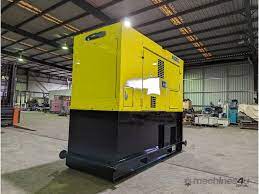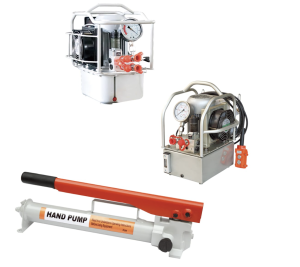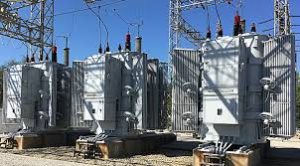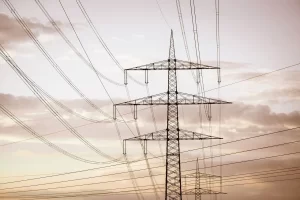
One important power source that is widely useful in many different industrial areas is compressed air. It has distinguished itself from alternative power sources with its safety, adaptability, and ease. Compressed air provides a continuously uniform force and guarantees smooth transitions. In addition, it achieves greater pressures with less air volume and has an improved power-to-weight ratio when compared to other power source
By using air-powered equipment, installation processes may be streamlined, downtime can be minimized, and maintenance costs can be reduced by using fewer components.
Air compressors are useful in the production of nuclear power, chemicals, food and beverage products, pharmaceuticals, and a variety of other industries. These sectors have seen a revolution thanks to the development of air compressor technology, which has increased speed, safety, and efficiency.
However, not every industry uses the same kind of air compressors. Every industry has different demands and standards, necessitating air compressors made to fit their particular requirements by industrial compressor suppliers. Let’s take a closer look at those choices in our air compressor purchasing guide.
Industrial Air Compressor Applications
Compressed air’s adaptability is demonstrated by the wide range of industrial and commercial applications it finds usage in. Among the most common applications are:
- Compressed air is needed to power pneumatic tools, which include impact wrenches, drills, and pneumatic cylinders. The pressurized air required for these tools to carry out a variety of duties effectively and steadily is provided by an air compressor.
- Systems of automation and control: In addition to providing the compressed air required to run pneumatic actuators, valves, and cylinders—essential parts of automated machinery and manufacturing lines—air compressors also power automated systems.
- In industrial facilities, compressed air is frequently useful as a power source for conveyor systems. It permits the flow of raw materials, assembled parts, and completed goods throughout the manufacturing line, enabling efficiency.
- Air cylinders and other pneumatic actuators are necessary for exact movement and control in manufacturing operations. The air needed to actuate these devices is provided by an air compressor, enabling precise and repeatable motion in sorting systems, manufacturing lines, and other industrial applications.
- Compressed air is useful for cleaning and blow-off activities, such as clearing away dust, dirt, or other impurities from components, equipment, or work surfaces. To provide an effective stream of compressed air for cleaning and blow-off operations, air compressors are useful to power air blow guns or jets.
- For certain uses, certain manufacturing processes call for pressurized air systems. For instance, compressed air from an air compressor is required to create the required force or pressure for pneumatic presses, clamps, and control systems.
Air Compressor Types
Positive displacement mechanisms are how the most common kind of air compressor produces pressure. Rotating screws and reciprocating piston air compressors are the two most widely common types.
Reversible Compressor
Air is compressed using reciprocating compressors using pistons or cylinders. They are made for sporadic use and have a lower capacity. These compressors are commonly used in workshops, garages, and construction sites. They are capable of operating at either high or low pressure.
Reciprocal compressors come in two configurations:
Compressors with a single stage: These machines take air from the atmosphere and compress it to the desired pressure in only one stroke. The normal pressure range for single-stage compressors is 70 to 135 pounds per square inch (PSI). Compared to two-stage compressors, they often offer greater cubic feet per minute (CFM) rates.
Compressors with two stages: These compressors compress air in two stages, first to an intermediate pressure and then to a maximum pressure of 200 PSI. Because compressed air cools the stages of a two-stage compressor, it performs better at higher pressures. There are types of two-stage reciprocating compressors without oil, however, the majority are lubricated by oil.
Screw Compressor Rotating
To compress air, rotary screw compressors use two screws that rotate in opposing directions. Their low-pressure functioning and large capacity make them ideal for continuous usage, often lasting up to 24 hours a day. Usually huge industrial machinery, these compressors have between 10 and 1,000 horsepower (hp).
In many industrial and commercial applications where a consistent and dependable compressed air supply is essential, rotary screw compressors are employed. The following are some common applications for rotary screw compressors:
Manufacturing facilities: They are capable of supplying a steady supply of compressed air for the smooth and effective operation of pneumatic machinery, including robotics, automated assembly lines, and conveyor systems.
Construction and contractors: They can run air tools and equipment, such as pneumatic drills, jackhammers, impact wrenches, and sandblasters, which allows for heavy-duty work and uninterrupted operation.
Automotive industry: Pneumatic wrenches, air-powered paint sprayers, tire inflation systems, and other air-powered equipment power by rotary screw compressors. It supplies the compressed air required for vehicle repair, painting, and assembly processes.
Typical Features of Air Compressors
You need more thorough knowledge when choosing an air compressor that is right for your business. You also need to know the features and options that come with each of the various varieties.
Highest CFM Application
The volume flow rate is measurable in cubic feet per minute (CFM), which indicates how much air a compressor can pump in a minute. Higher CFM units are essential for larger applications.
Horsepower
The power that a compressor motor generates is measurable in horsepower. Engines with more horsepower can manage higher workloads and produce more PSI. Air compressors usually have a horsepower range of 1.5 to 6.5. Engine System
Drive System
If there is constant access to electricity, a compressor can power by an electric motor. Systems using electric drives are less expensive and require less upkeep. Conversely, in situations when the availability of electrical power is intermittent, a compressor powered by a petrol engine provides versatility in the workspace.
Tank size
Depending on how the tank will be useful, choose the right size by oil free piston compressor manufacturers. Larger tanks are essential for continuous operation, whereas smaller tanks are appropriate for brief, focused bursts. Higher PSI levels are for longer periods by units with larger tanks and stronger motors. Pump cycles can lower the storing extra air in an enlarged six-gallon tank.





